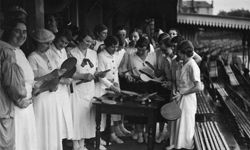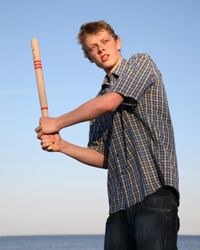While there are many Great Baseball Debates (DiMaggio vs. Mantle, league vs. interleague play, Cracker Jacks vs. peanuts), one that has raged on for centuries is who actually invented baseball. Was it the French? The same Brits who gave us cricket (as we'll see later)? Or was it purely a game invented by hardscrabble but lovable street urchins playing stickball in the Bronx?
That's a topic for another article. Let's avoid controversy and focus on a few games that may not have been the origin of America's pastime, but they at least bear some similarities to it -- and they just might have influenced the rules of the game.
Advertisement
All of these games involve at least a ball and a bat, but many of them resemble baseball in more than just comparable equipment. Read ahead for examples of ball-and-bat games that Shakespeare, the Egyptians and the Vikings have played, along with a few games with historic roots that dandies of our day still compete in.



